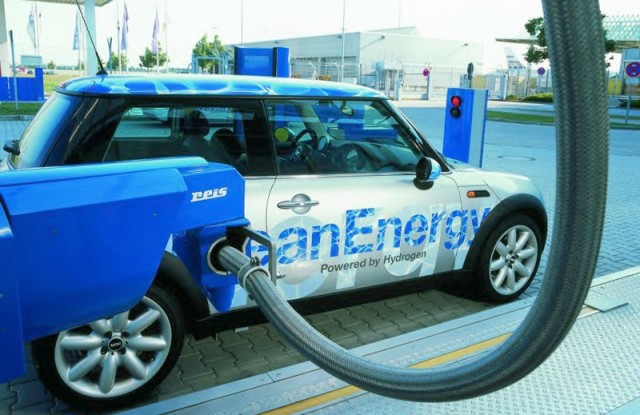New technique gets pure hydrogen out of splitting water
Ars Technica » Scientific Method 2014-09-21

Continued concerns about global warming have boosted work on alternative fuel sources that reduce emissions. Hydrogen is an appealing, clean-burning fuel. Currently, most hydrogen comes from the processing of fossil fuels, which produces carbon dioxide as a byproduct. However, the electrolysis of water produces hydrogen without the release of greenhouse gases—provided the electricity used in the process comes from renewable energy.
Currently, the favored method for producing hydrogen involves what are called proton exchange membrane electrolyzers (PEMEs). These use a polymer membrane that allows the movement of protons between solutions of varied charge while separating the negatively charged cathode and positively charged anode. Since the two gasses, hydrogen and oxygen, are produced at different electrodes, the membranes separate them as well, which allows for the easy harvesting of hydrogen.
Unfortunately, PEMEs are expensive because they require precious metal catalysts. Although higher power loads offset the price of these catalysts to some extent, these loads can lead to the simultaneous presence of hydrogen, oxygen, and catalytic particles, resulting in the production of reactive oxygen species (ROS) that degrade the membranes. Low power loads are not as effective because the rates of oxygen and hydrogen production are similar to the rates at which these gasses diffuse through the membrane. As a result, rather than pure hydrogen, you get a hazardous mix of the two gasses.
Read 7 remaining paragraphs | Comments